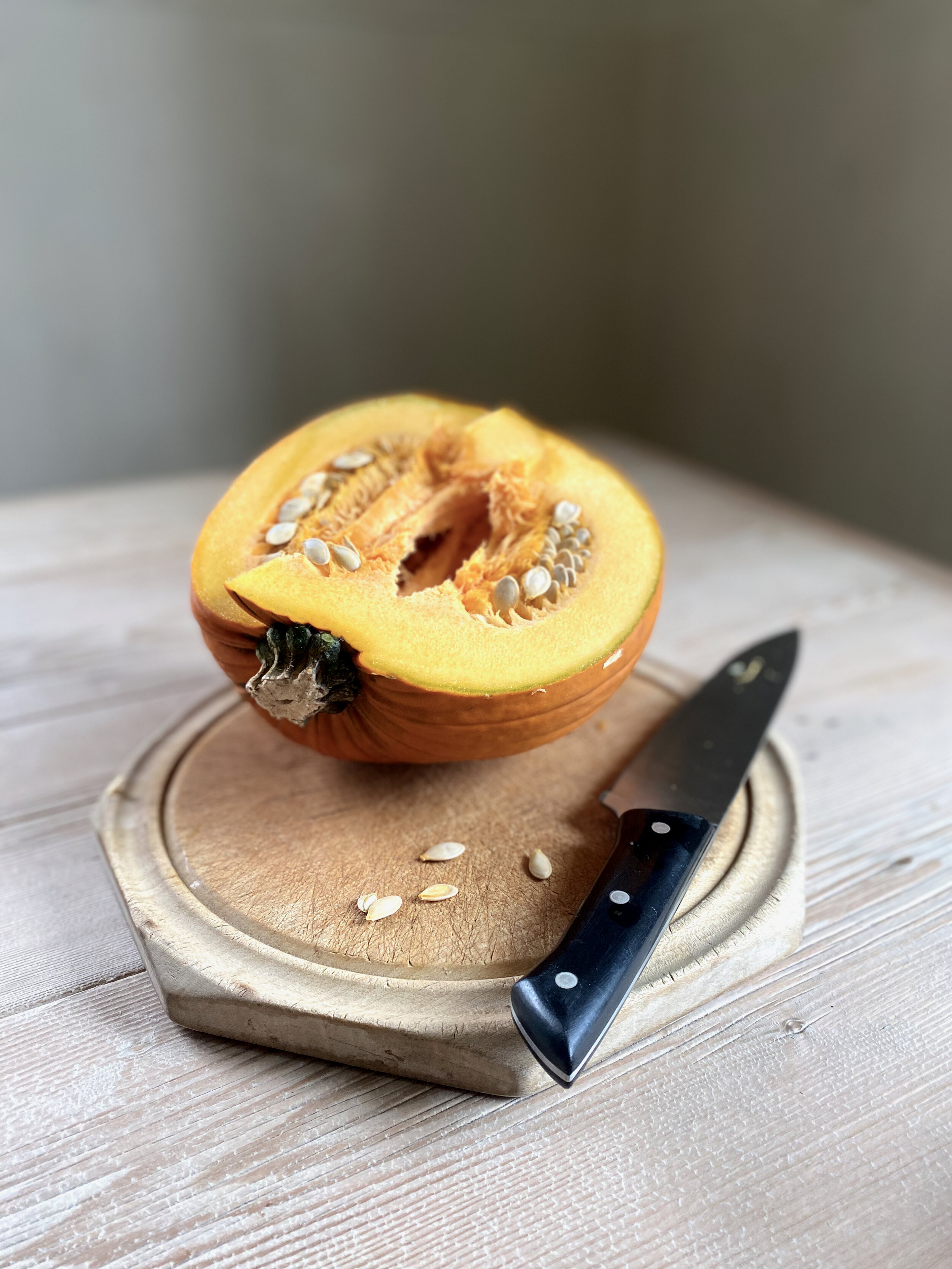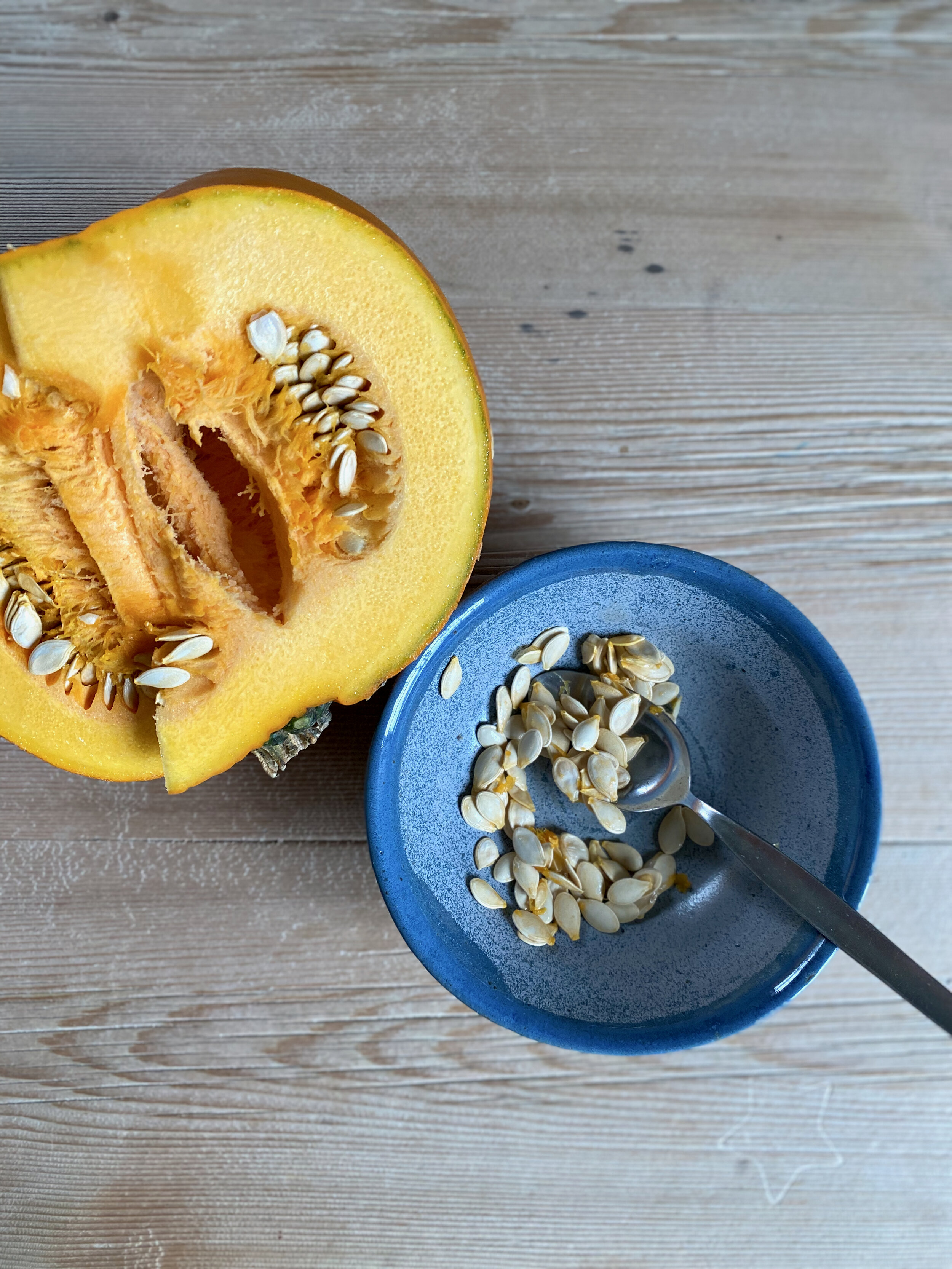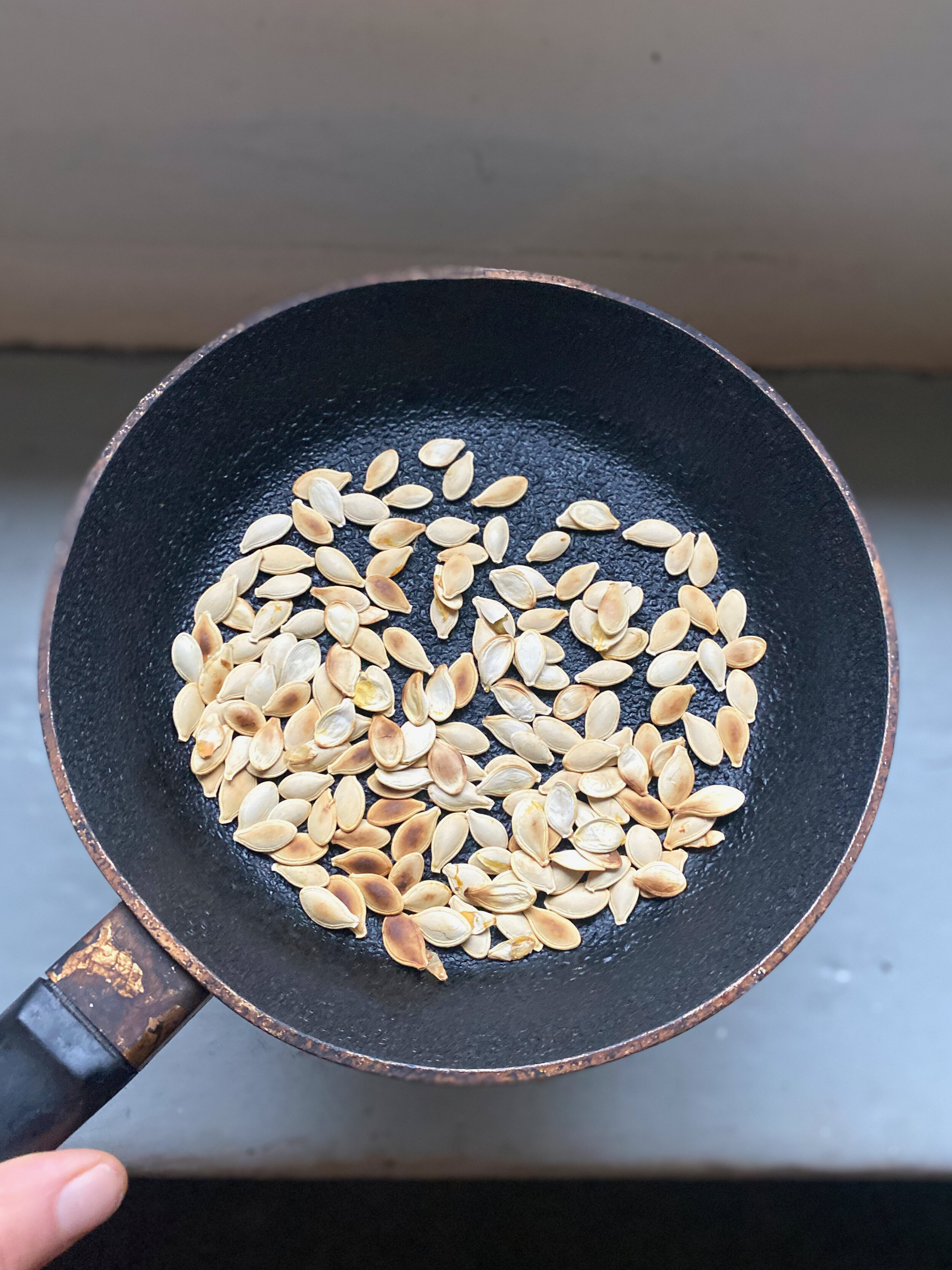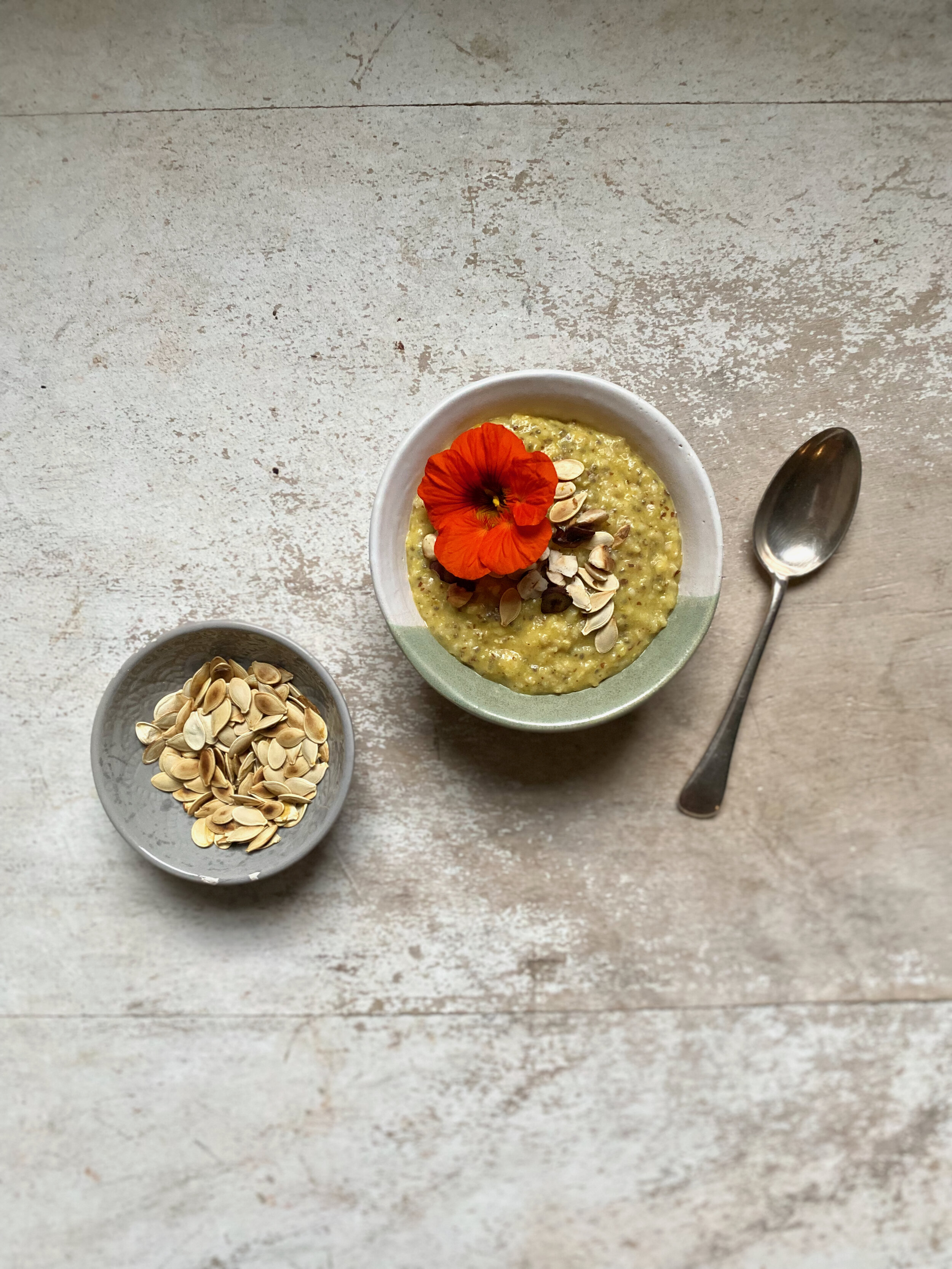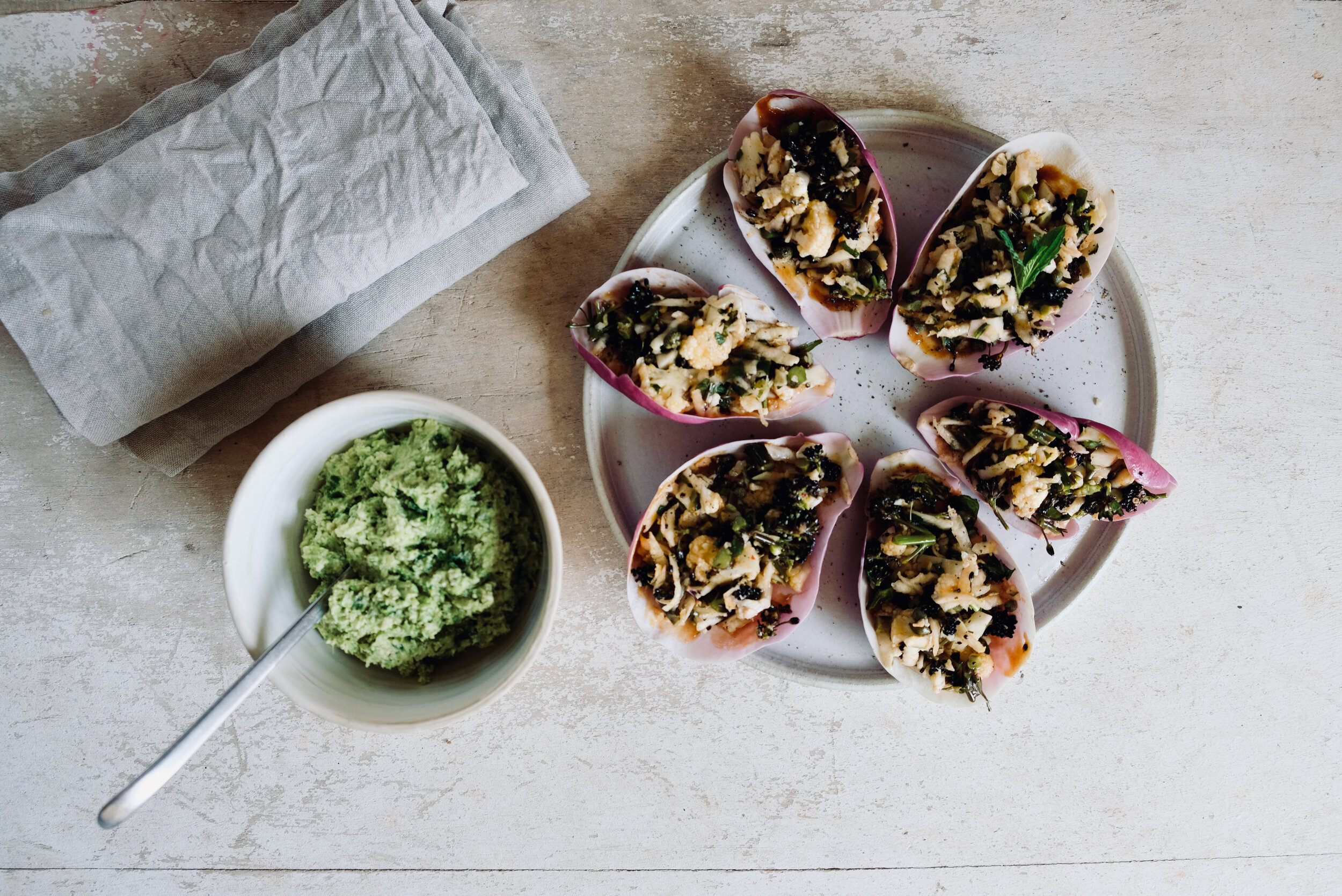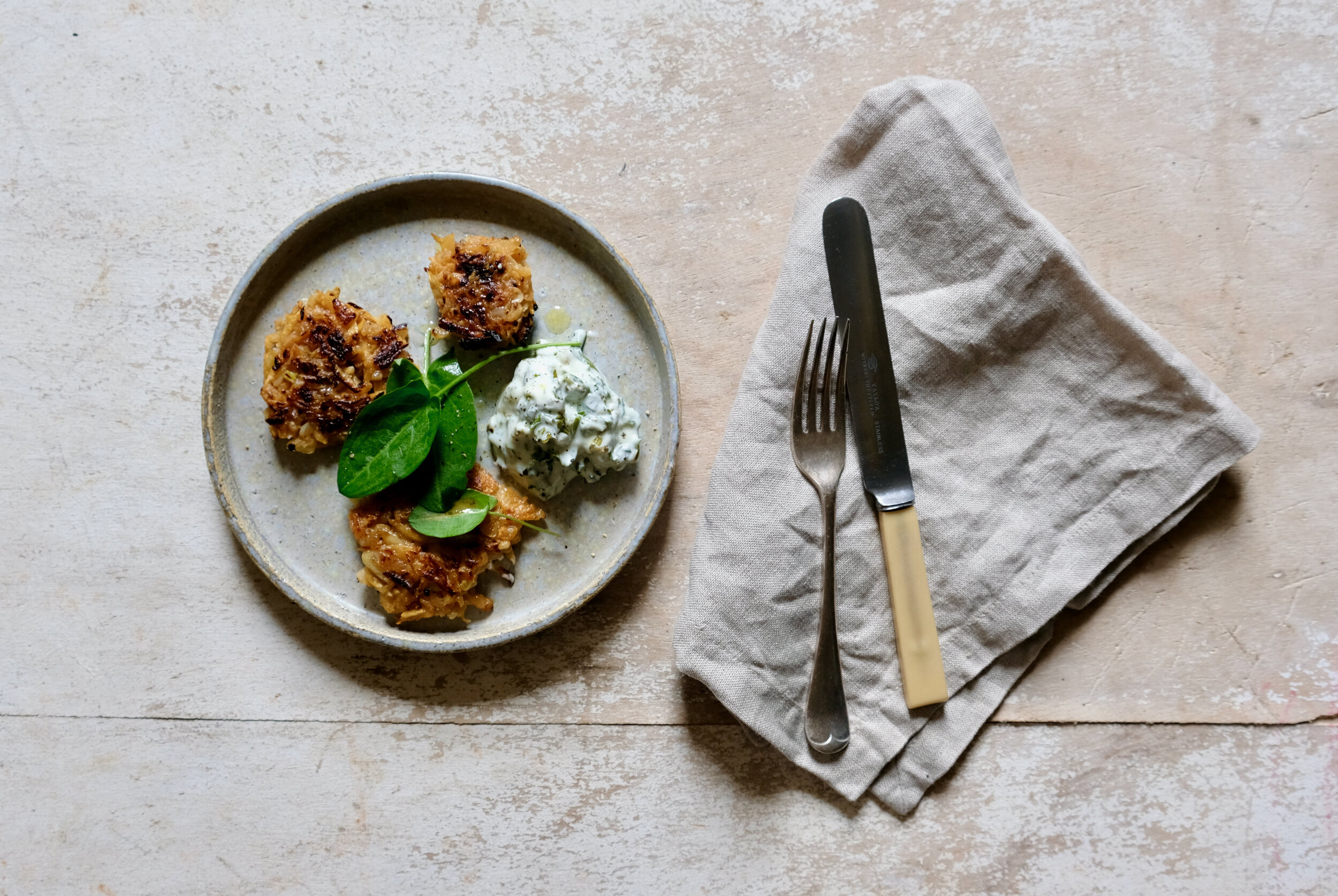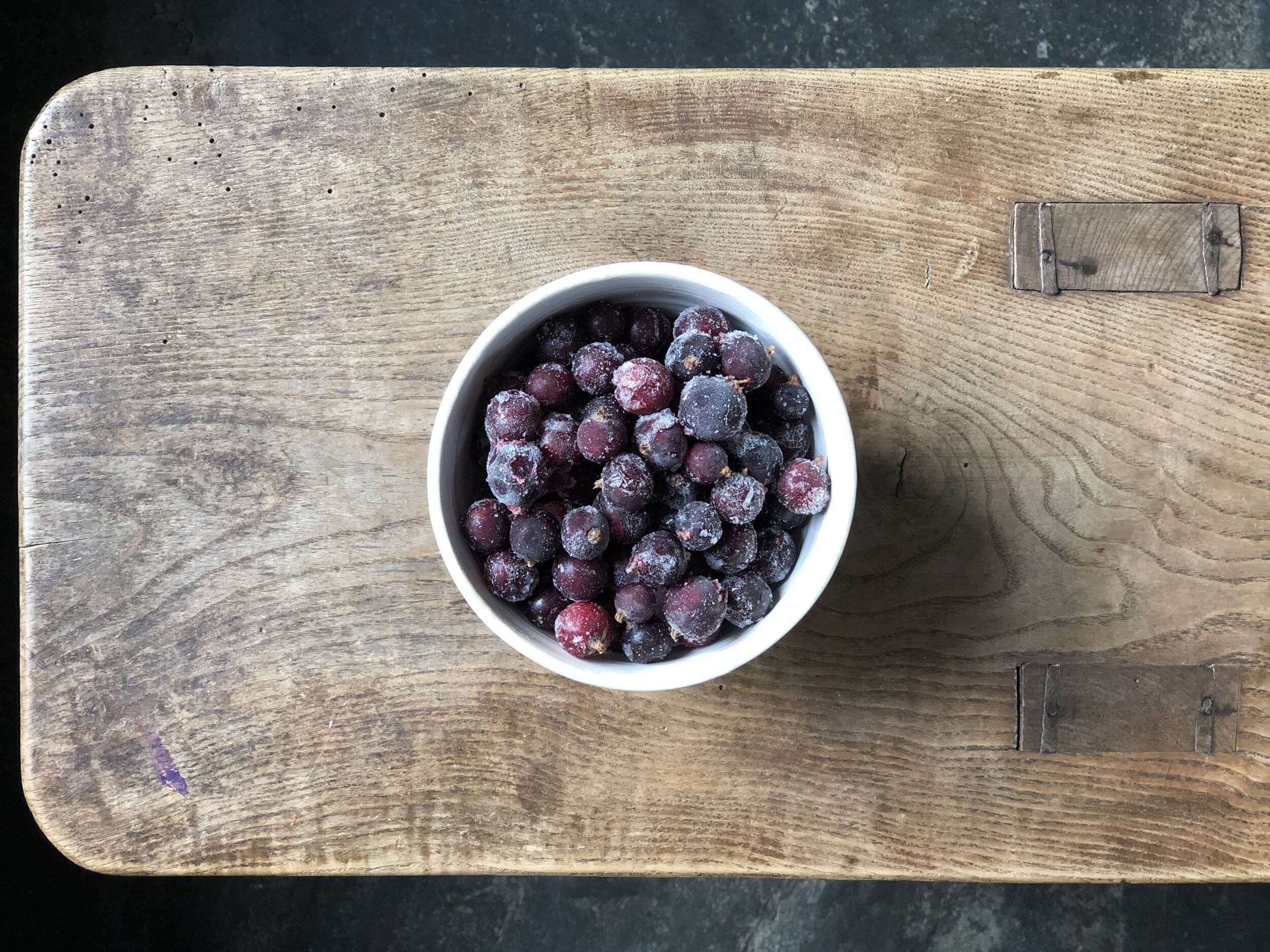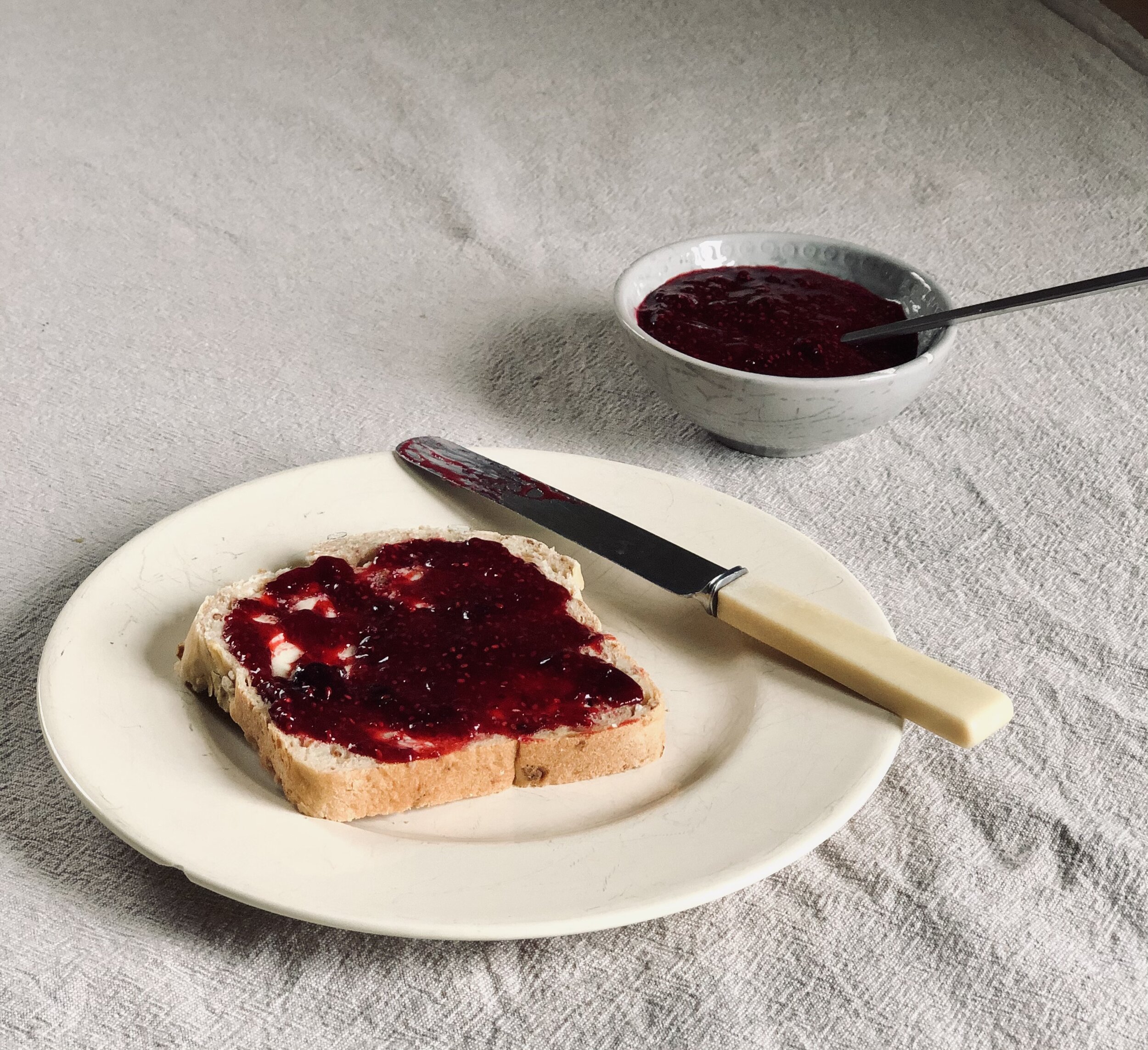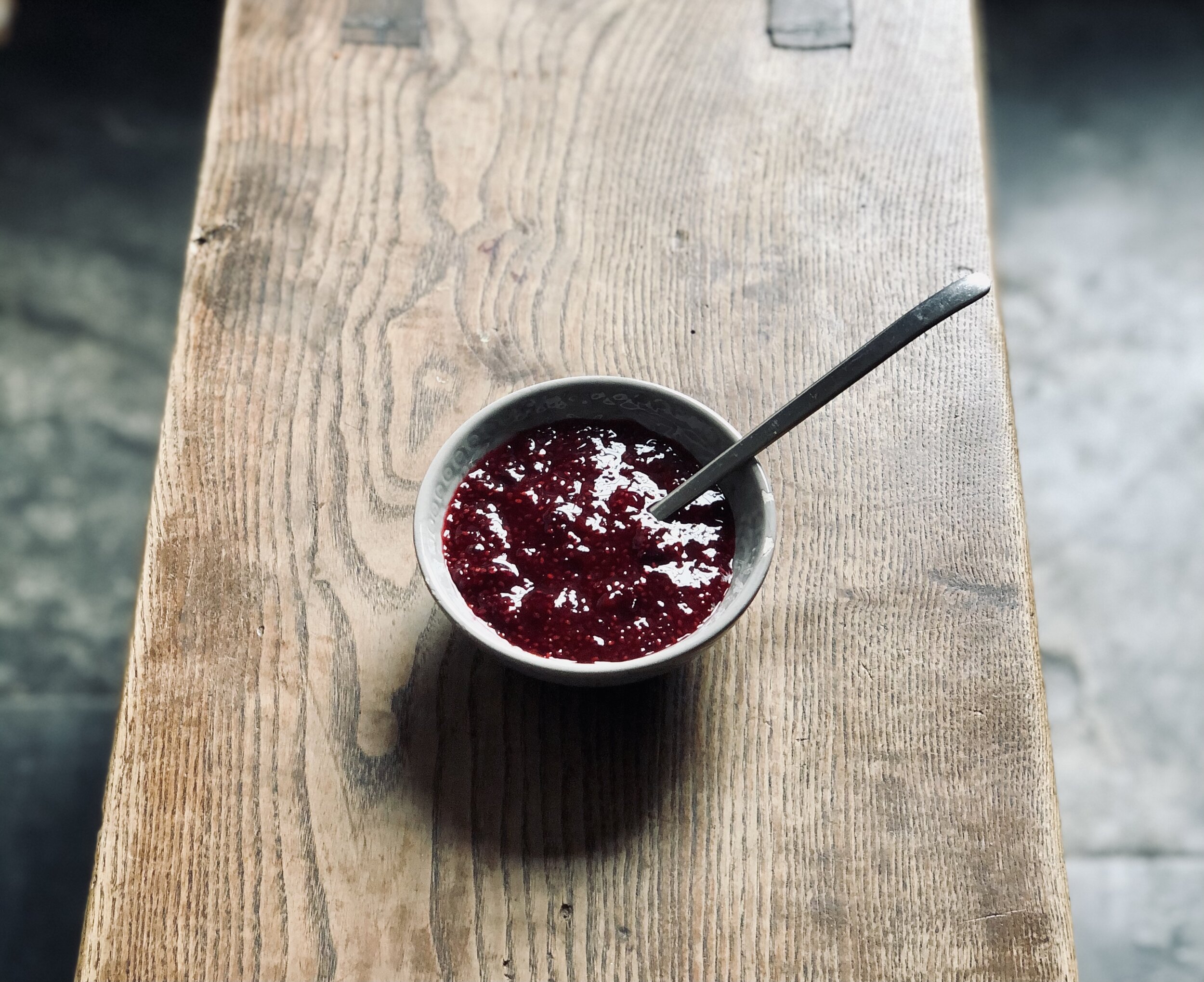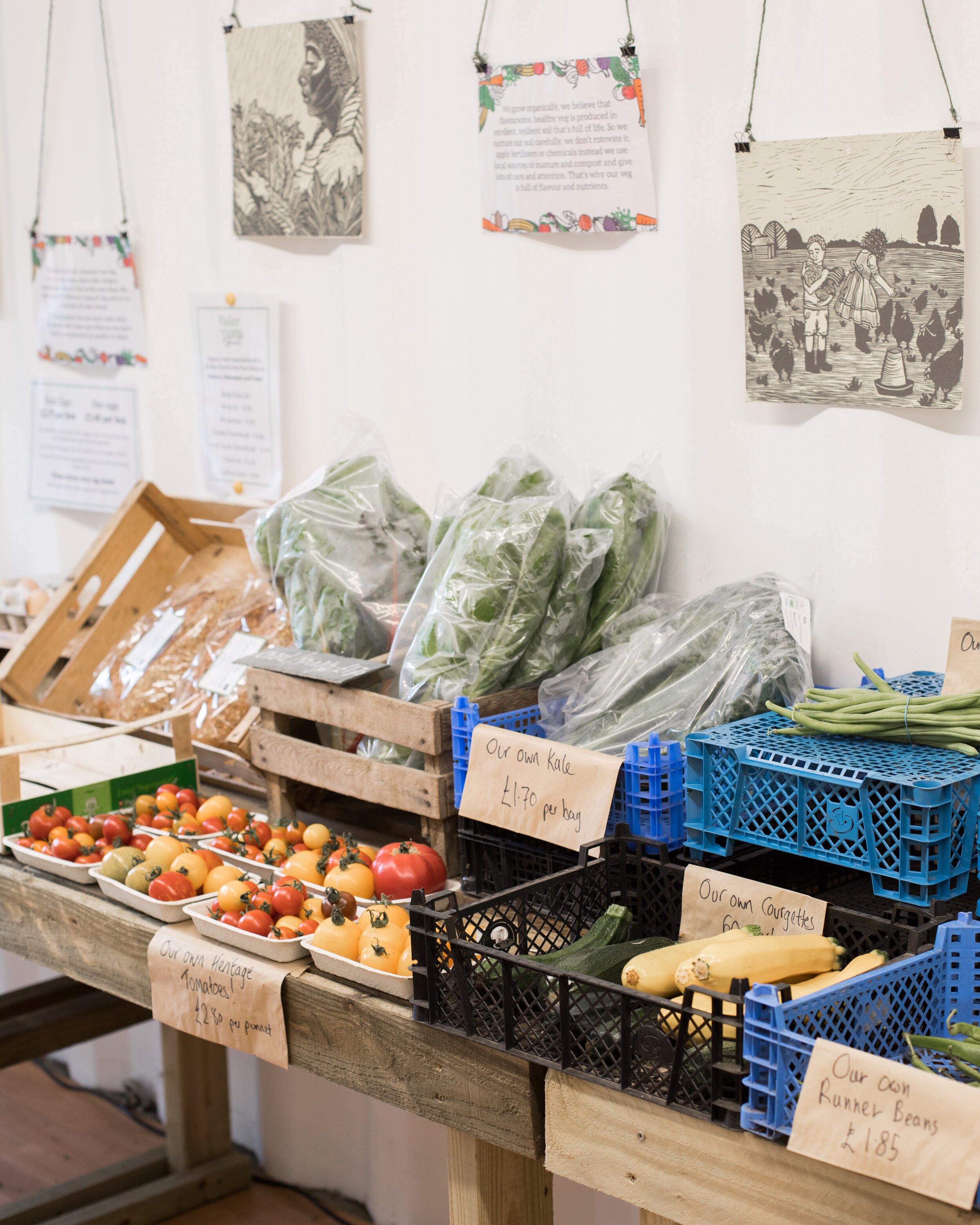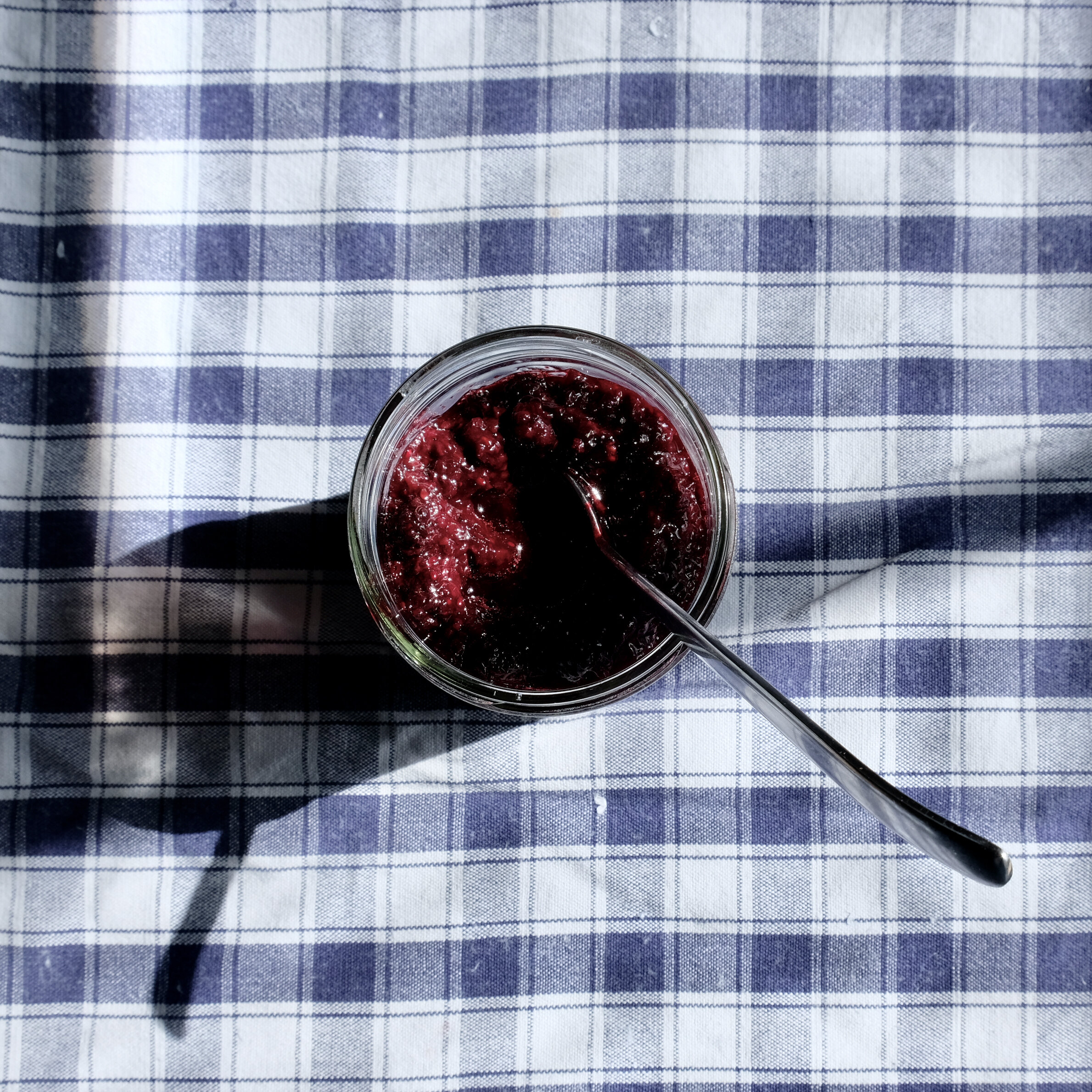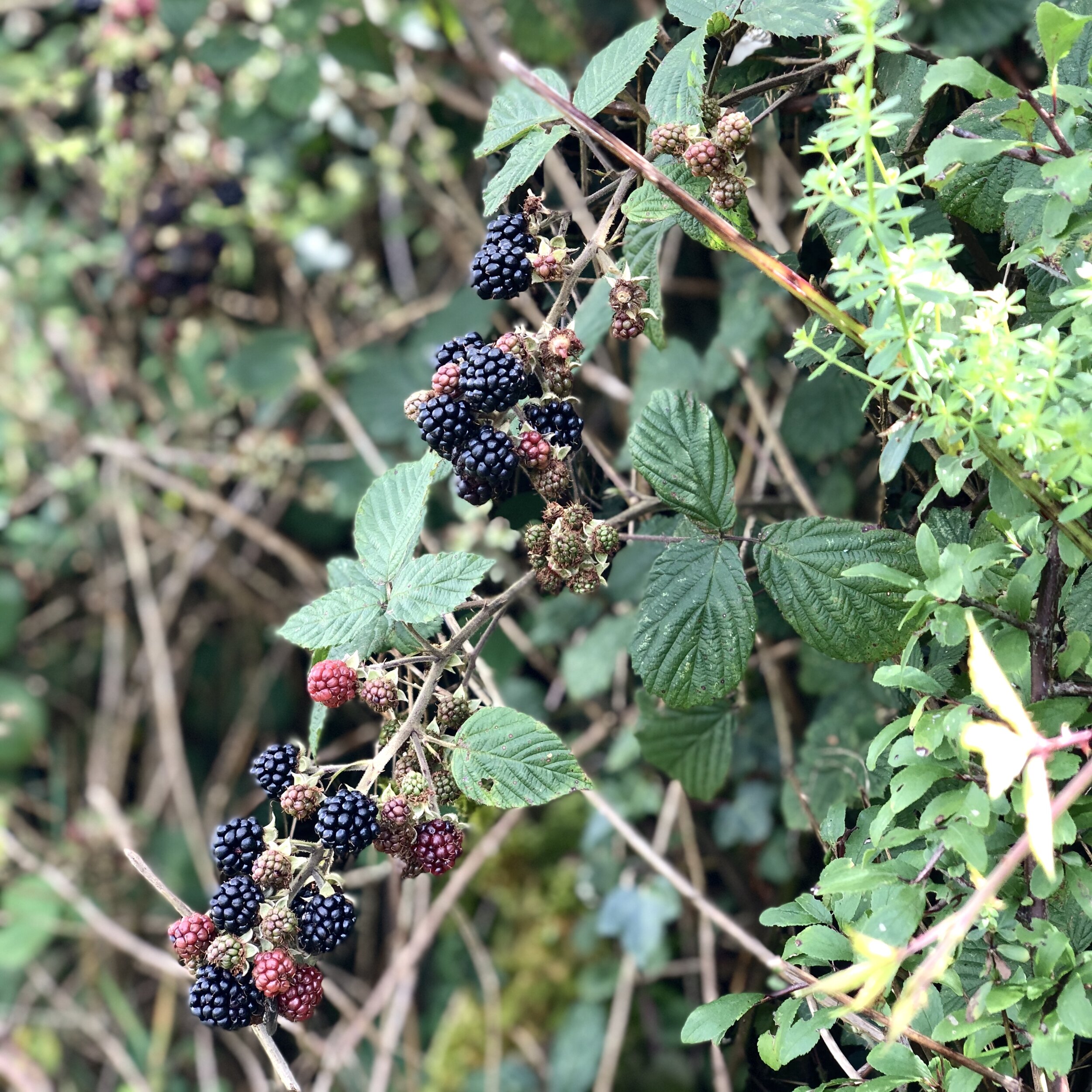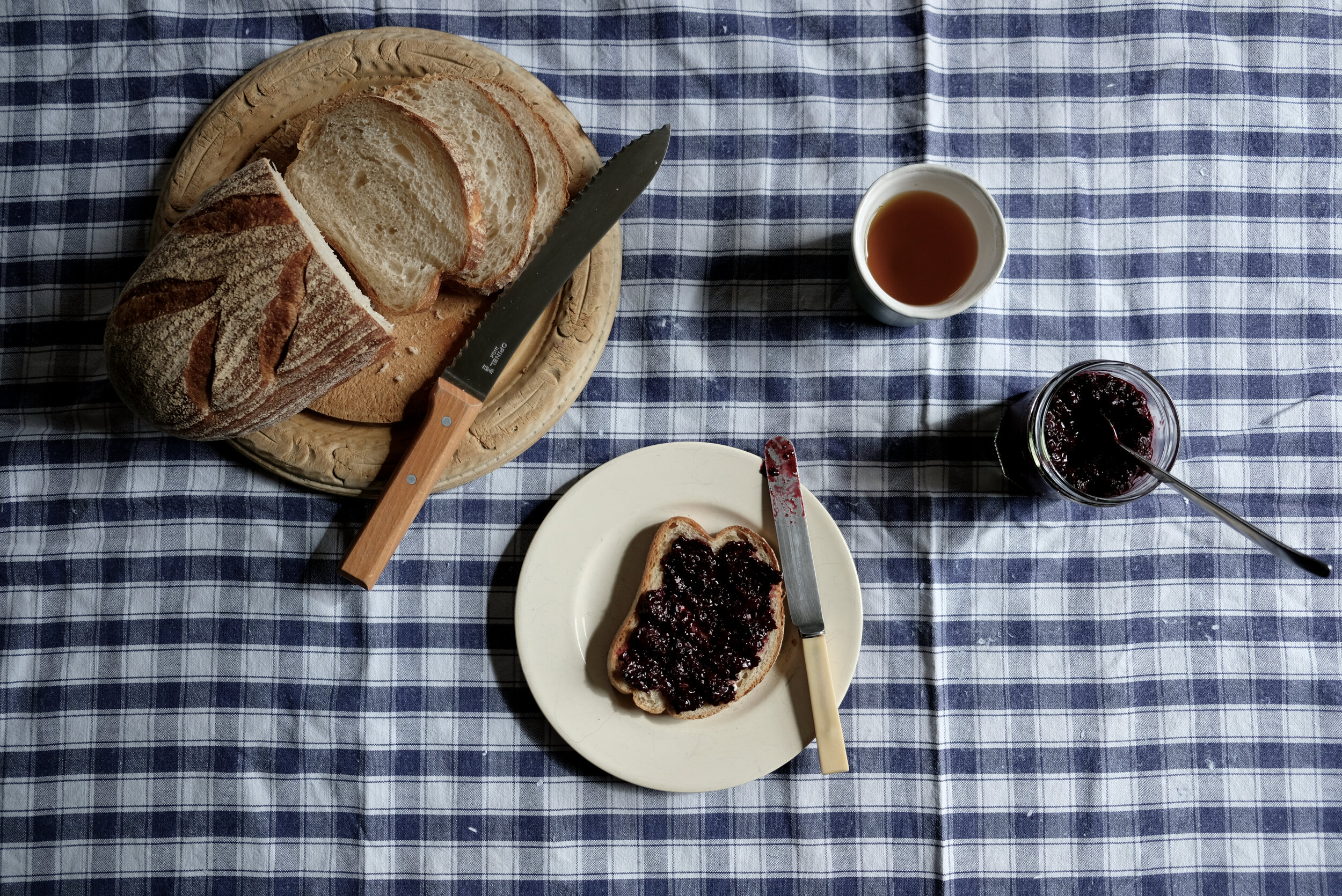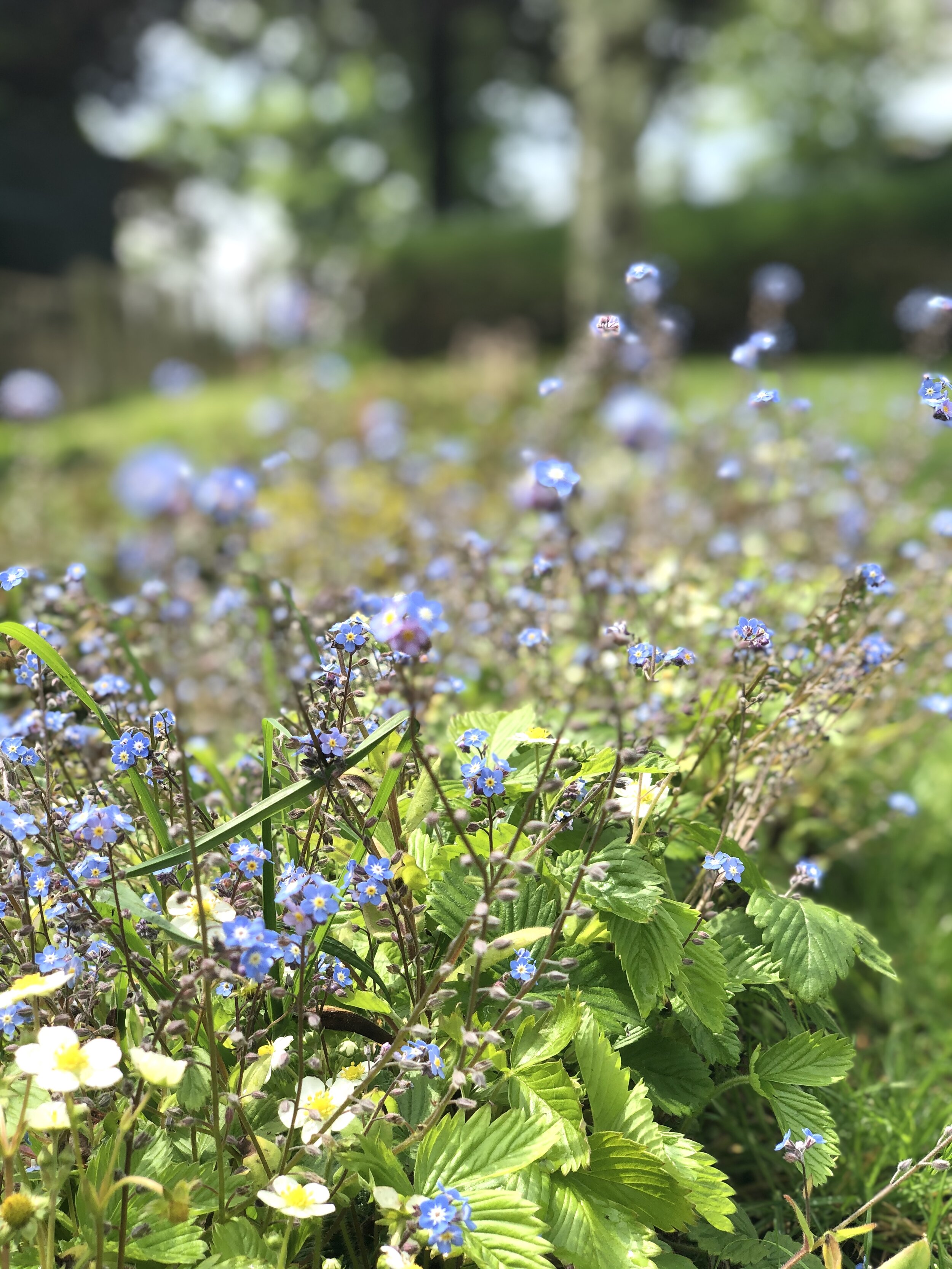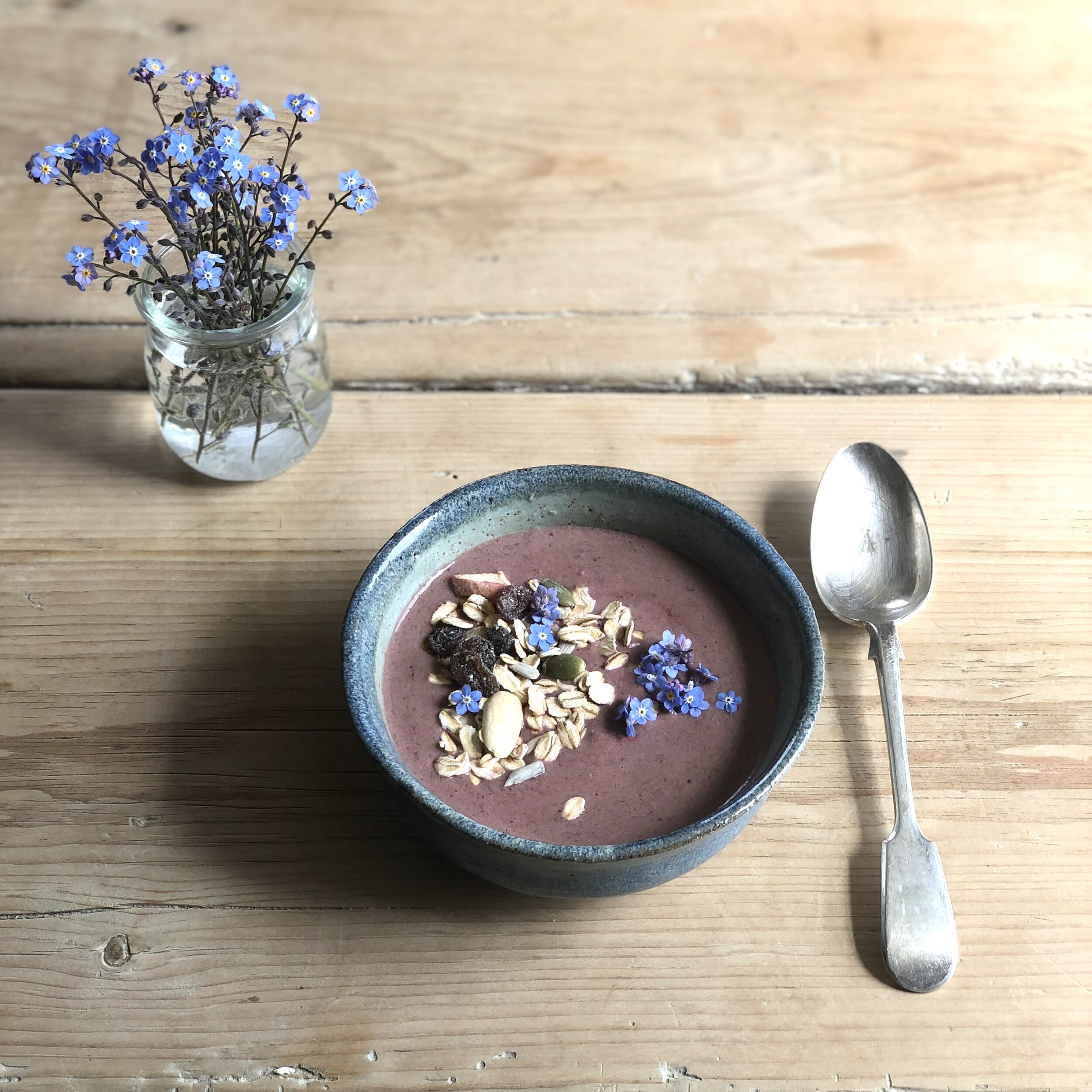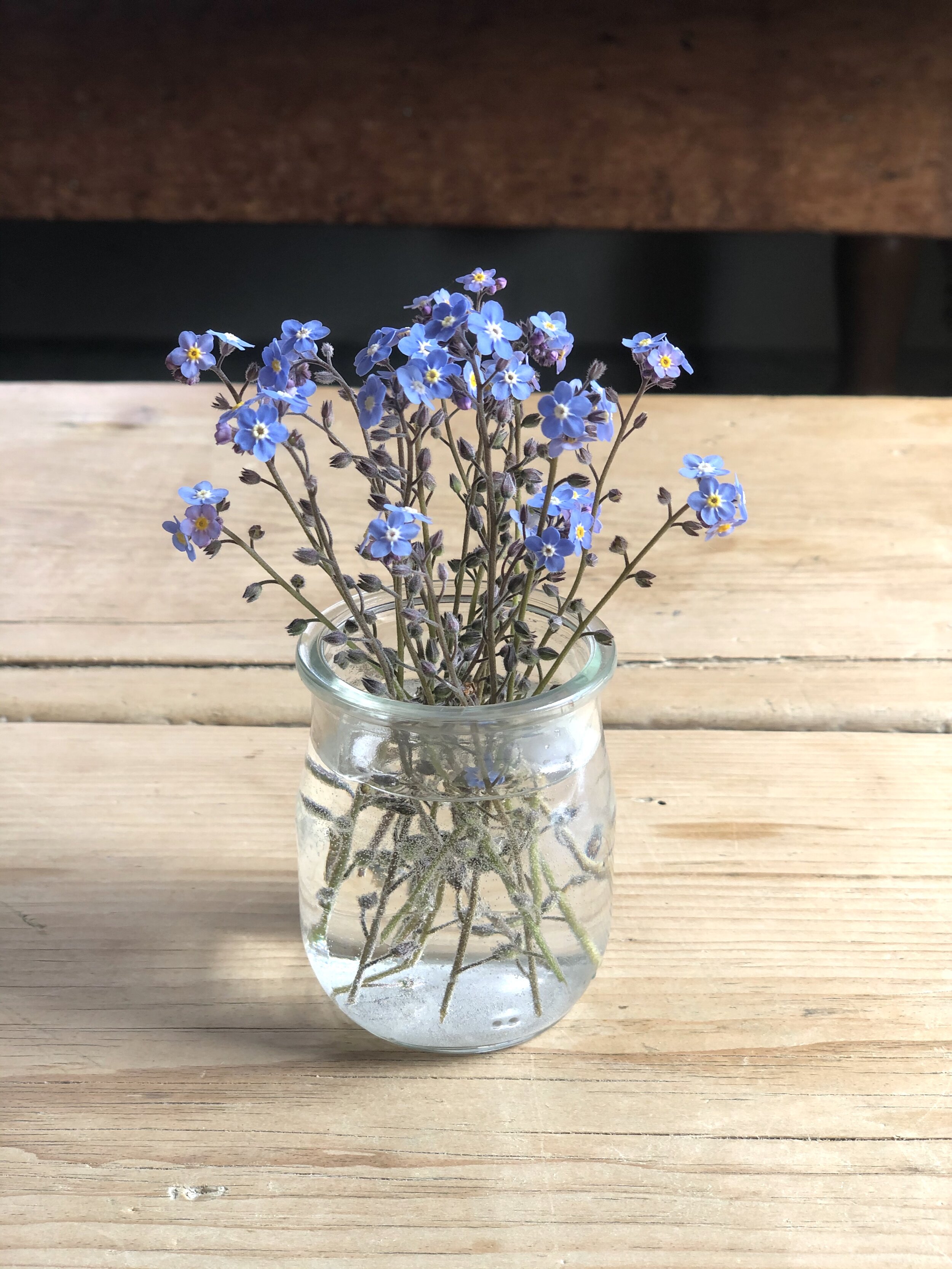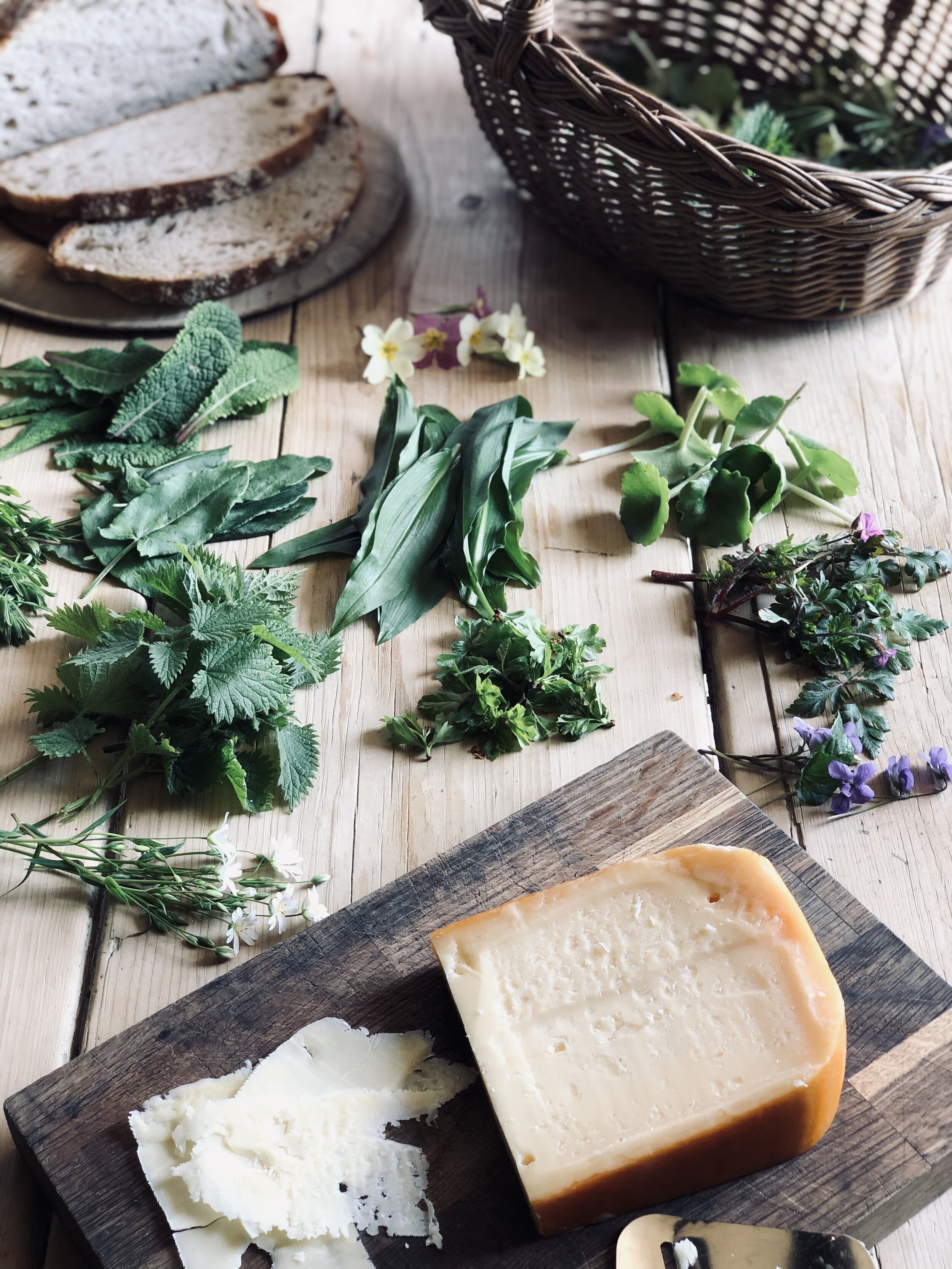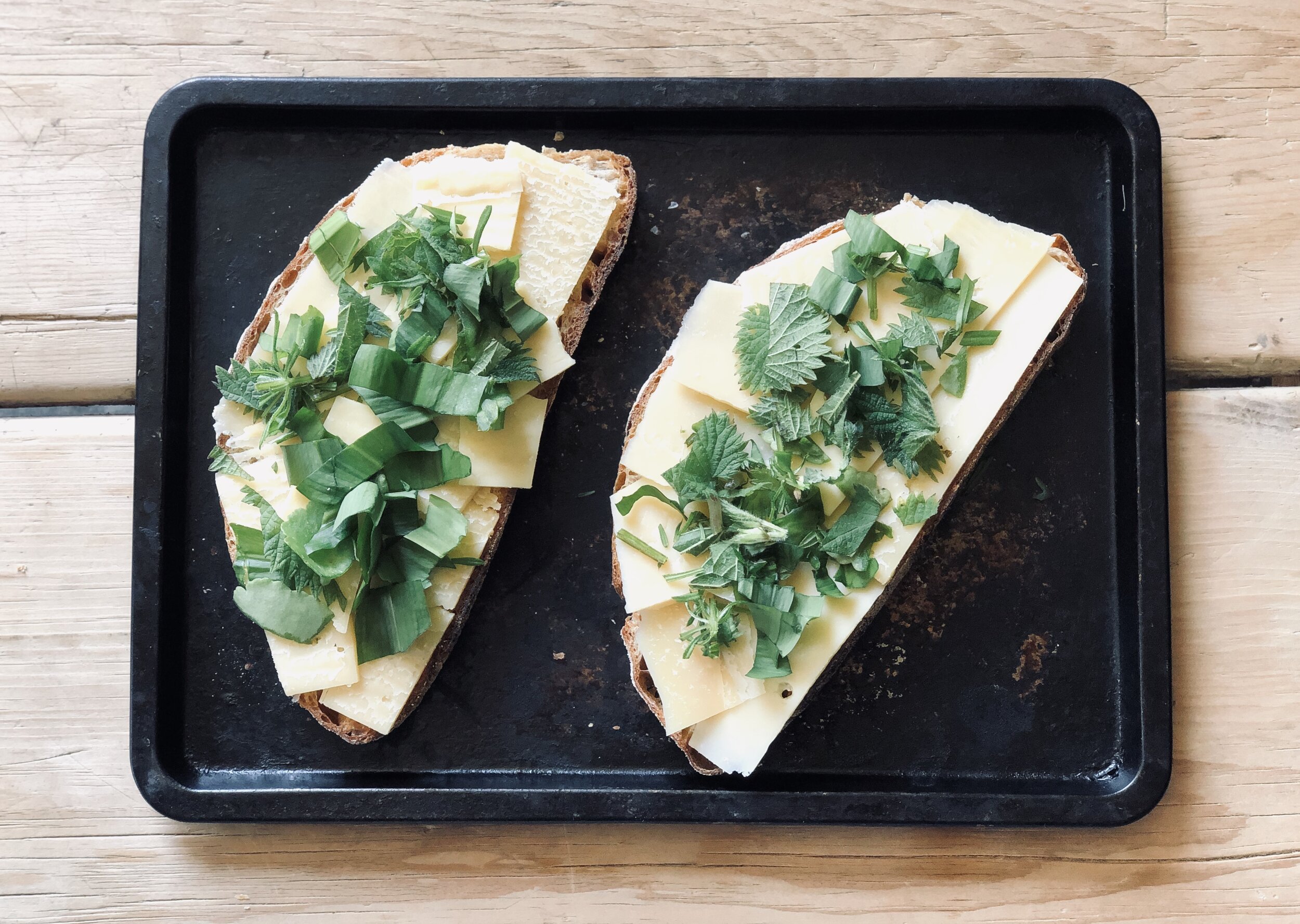This most versatile of recipes can be eaten at any time of day - as breakfast, snack or pudding. It’s a great way of using up autumnal fruits, the version I made pictured above uses up pumpkin flesh left over from Halloween along with windfall apples - did you know that around 180,000 tonnes of pumpkin are thrown away each year (Guardian)?
The compote can be eaten on its own, perhaps accompanied with yoghurt; added to cereals, muesli or granola at breakfast time; and it also makes the perfect fruit base for a crumble.
In the recipe below I’ve included details of how to make the crumble topping if you wish to use some or all of the compote in this way. It also stores in the fridge for a good few days so you can come back to it and use it in different ways. This recipe is refined-sugar free, and can be made vegan by replacing the honey with maple syrup, and gluten free by using GF oats.
I cooked this recipe for breakfast with Alex Geldenhuys of New Dawn Traders for Episode 9 of my podcast, Breakfast & Beyond. Do take a listen!
I hope you enjoy x
Recipe: Pumpkin & Apple Compote
Serves 8 (8 generous compote portions, or with crumble topping added, 8 portions of crumble)
Ingredients:
400g pumpkin, peeled, seeds removed, cut into bite-size pieces
500g apples, cored & cut into bite-size pieces
2 tsp ground cinnamon
Few shavings fresh ginger (or 1 tsp ground ginger)
80g raisins (or other soft fruit eg dates or apricots, chopped into small pieces)
100g honey (or maple syrup for vegan version)
400ml water
1 lemon
2 tsp chia seeds
If you wish to make a Pumpkin & Apple Crumble, for the topping you will need:
300g oats
100g mixed nuts, roughly chopped
1 tsp cinnamon
100g honey (or maple syrup)
80ml sunflower oil
To make the compote:
Place pumpkin and apple pieces in a large saucepan, add the water, cinnamon, ginger, raisins, honey and juice of the lemon. Stir well, bring to the boil then turn down heat and simmer for approx 20 minutes until pumpkin and apple have softened, but still keep their shape.
Remove from the heat, add the lemon’s zest along with the chia seeds, allow to sit for 10 minutes.
The compote will be ready in 10 minutes once the chia seeds have absorbed some of the liquid. You can eat it straight away, cool it and refrigerate, or place it in the base of a baking dish and add the crumble topping. You may wish to eat it on its own, add to cereals or muesli, or serve with yoghurt or ice cream - great as a breakfast or a pudding!
If making a crumble: preheat oven to 180C. Warm honey and sunflower oil together in a saucepan. In a large bowl mix the oats, nuts and cinnamon, then pour over the honey and sunflower oil when melted, stir well. Spread the compote mixture in the bottom of a baking dish, add the crumble on top, bake in the oven for approx 30 minutes until the top turns golden.





